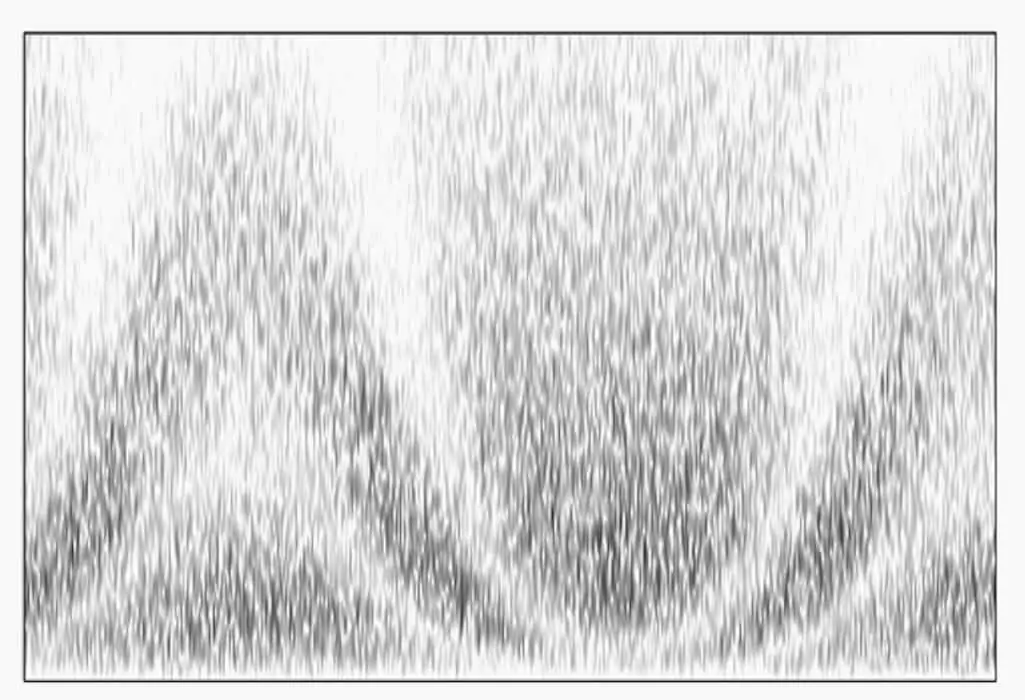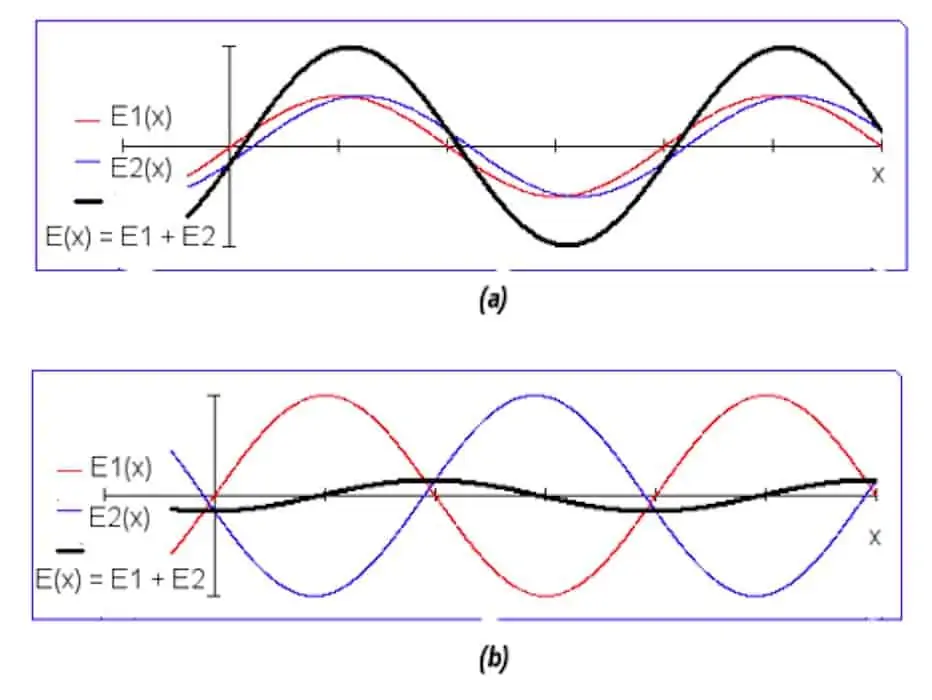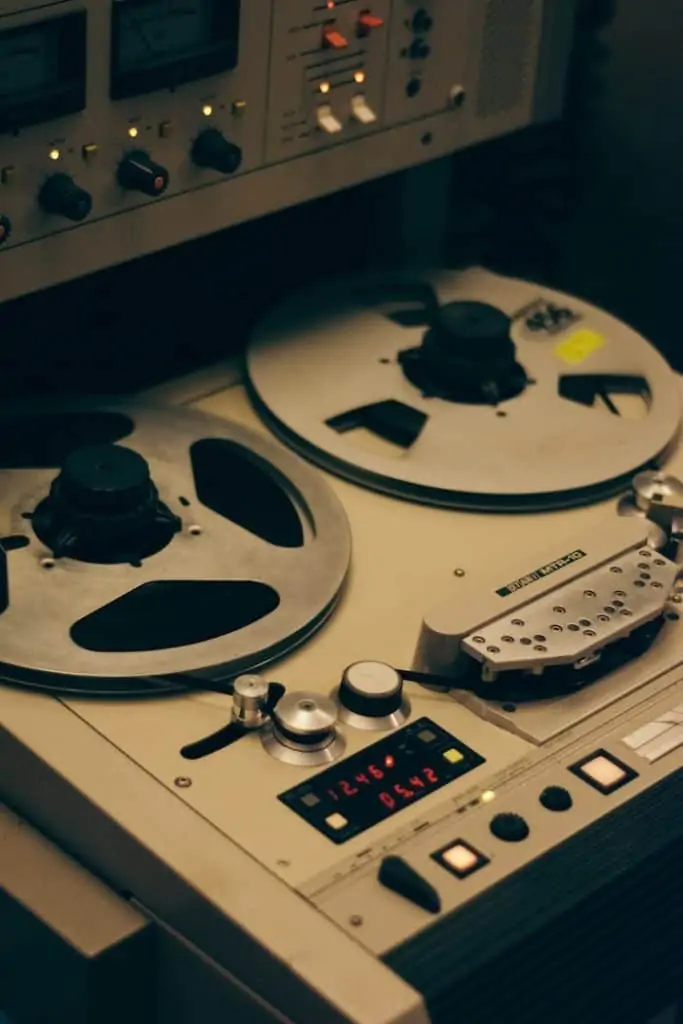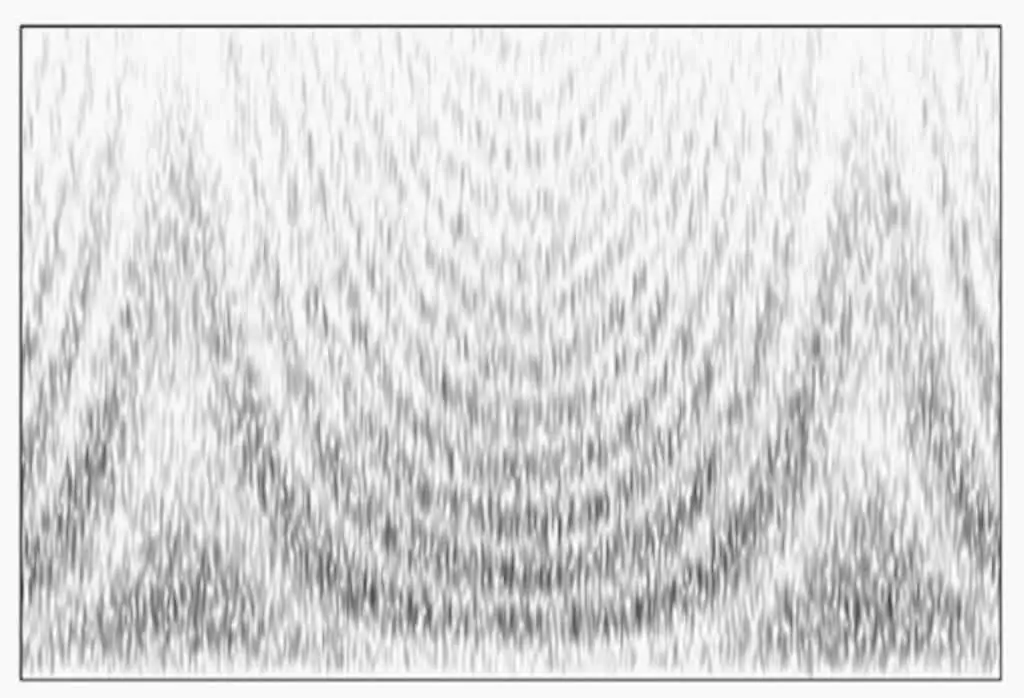One of the most exciting parts of learning electric guitar is experimenting with different effects. Whether it’s adding rockabilly-style delay vs. metal-friendly distortion, effects are the cornerstones of many music genres.
Flanger and phaser are two of the most popular effects from the psychedelic era –– and beyond. They’re both characterized by swirling, sweeping noises. But they have unique features in terms of how they’re made, how they sound and how they’re used on guitar and other instruments.
Originating in 60s/70s classic rock and surviving in alternative rock, country rock, metal, funk and indie, these effects are surprisingly versatile. However, there are some key features that determine when it’s best to choose one vs. the other.
Once you understand the key features of flanger vs. phaser, you’ll be able to play authentic covers of classic and modern songs –– or even work them into your own personal style.
Contents
First Things First
Before we get into the key features of flanger vs. phaser, let’s start off with a bit of background theory. This will help clarify some of the technical bits we’ll cover in the next section.
How does audio work?
Audio is made up of sound waves, which are formed by vibrating air molecules.
Let’s say you play a G note on your guitar. When you do, the air molecules around the 3rd string start moving. This changes the air pressure, resulting in distinct sound waves. When the waves reach your eardrum, it vibrates and sends a signal to your brain. Your brain then interprets this signal as a G note. The same process applies to any type of sound.
A sound wave diagram, showing crests and troughs.
Like ocean waves, sound waves are characterized by crests (maximum points) and troughs (minimum points). When two crests or two troughs from different waves overlap, the volume of the signal is amplified. This is called constructive interference. When one crest and one trough overlap, the volume drops completely, creating a notch in the spectrogram (visual representation of sound waves). This is called destructive interference.
Diagrams showing constructive interference between two sound waves (a) and destructive interference between two sound waves (b). The waves are represented by the red and blue lines (“ConstructiveandDestructiveInterference” by KaWus1093 / CC BY-SA 3.0).
When constructive interference occurs at every crest or trough between two sound waves, we say that they are in phase with each other. When destructive interference occurs at every crest or trough, we say that they’re 180˚ out of phase. Anything in between is measured from 1 to 179˚ out of phase.
In a natural acoustic setting, it’s rare to have two sound waves perfectly in phase. This is because sound is affected by a lot of constantly changing variables, like air circulation vs. the position of objects within a room, etc. However, digital audio effects make it possible to manipulate two (or more) sound waves so they’re constantly in or out of phase at set degrees.
What are modulation effects?
Both flanger and phaser belong to a family of effects called modulation effects. These refer to anything that modulates (changes) one or more characteristics of an audio signal (electronic representation of a sound wave). This might include the:
- Frequency/pitch: sound quality (ex: high vs. low)
- Phase: alignment of crests and troughs
- Amplitude/volume: height of crests and troughs
- Motion: speed of the wave
Modulation effects take the dry signal (unaltered audio signal), duplicate it, change the copy (or copies) into a wet signal (altered audio signal), then mix all of the signals together. This results in new sonic colors, dimensions and movements.
Some other common modulation effects include chorus, vibrato and tremolo.
How They Work
The core differences in flanger vs. phaser stem from the way they produce wet signals. These differences have an overall effect on their sound and the way musicians use those sounds to their advantage.
Flanger
The invention of flanger is credited to guitar virtuoso Les Paul, who experimented with a process called tape flanging in the late 1940s/early 1950s. He would start off by recording audio on two tape machines simultaneously, then playing both tapes back while hooked up to a third recording machine. He would slow one tape down by pressing on the flange (rim) of one of the original tape reels. Thanks to the delay, this would result in a subtle swooshing sound on the new recording.
<iframe width=”560″ height=”315″ src=”https://www.youtube.com/embed/JMjqJ0WpB70″ title=”YouTube video player” frameborder=”0″ allow=”accelerometer; autoplay; clipboard-write; encrypted-media; gyroscope; picture-in-picture” allowfullscreen></iframe>
You can hear Les Paul’s tape flanging effect in his song “Mammy’s Boogie”.
Yet, the name itself was coined by John Lennon. He once asked Beatles producer George Martin a question about artificial double tracking, which uses a tape delay (similar to Les Paul’s method) to create the illusion of doubled voices or instruments. Martin replied with, “We take the original image and we split it through a double vibrocated sploshing flange with double negative feedback”. Lennon proceeded to refer to the effect as “Ken’s flanger”, after audio engineer Ken Townsend.
Tape flanging was popularized in the late 1960s by audio engineers Ken Townsend at Abbey Road Studios and Eddie Kramer at Olympic Studios. They used it while recording The Beatles’ “Revolver” album and Jimi Hendrix’s “Axis: Bold As Love” respectively.
Nowadays, it’s usually created through a pedal or a VST plugin for a DAW (Digital Audio Workspace). These artificial tools make it easier to control the rate vs. intensity vs. overtones of the sweeps.

The modern flanger is closely related to chorus, which is one of the simplest guitar modulation effects. The copy of the dry signal is detuned and delayed, typically by 20-50 milliseconds (ms). This delay means that the copy will be out of phase with the original signal. Once the two signals are mixed, it creates the illusion of multiple guitars being played together.
The key production difference in flanger vs. chorus is the delay. A flanger delay is much shorter, typically 0.1-10 ms. This results in more instances of positive and negative interference, once it’s mixed into the dry signal.
Before this detuned, delayed wet signal is added, it passes through an LFO (low frequency oscillator), which creates a fast, rhythmic sweep up and down the frequency spectrum. Part of the output signal is returned to the input for more processing. This feedback results in resonating swooshes that seem to go on indefinitely.
The shape that it produces on a spectrogram is called a comb filter. It is a series of notches, similar to the teeth of a comb.
In a chorus effect, the notches aren’t uniformly organized, but tend to be louder at lower frequencies. In flanger, the notches occur evenly along the frequency spectrum at harmonically-related intervals –– areas where two notes (one from the wet signal, one from the dry signal) with different pitches are produced at once. However, as the LFO feeds the signal back into the input, the notches appear to move. This creates different harmonic intervals each cycle.
A flanger spectrogram, with a characteristic comb filter.
The two most important controls for these pedals and plugins are the rate of the LFO (how fast the sweep cycles are) and the depth (how pronounced they are). Other controls include the resonance (how loud the sweeps are) and manual (whether the sweeps occur at a low vs. middle vs. high frequency).
Phaser
Similarly, phasers (also known as phase shifters) were created in the early 70s to mimic the sound of tape flanging. However, they have some noticeable production differences vs. their flanger cousins.
Phaser consists of a phase shift only, vs. the phase shift and delay of flanger (“MXR M-101 Phase 90” by Roadside Guitars / CC BY-SA 3.0).
First of all, phaser doesn’t delay the copied signal. Instead, it passes the signal through a series of circuits called all-pass filters.
Each filter creates a phase shift around a set frequency, creating a single notch in the frequency spectrum. All-pass filters are non-harmonically related, meaning that the notches won’t be spaced uniformly. Once the LFO mixes the wet and dry signal, there are fewer sweeps per cycle. However, because the notches stay the same each cycle, phaser sweeps are more predictable, vs. the harmonically shifting flanger sweeps.

The rate, depth and resonance are important phaser controls on pedals and plugins. Another key control is stage, which determines whether the sweeps happen as rises, falls or intervallic steps.
How They Sound
At first, it may seem hard to spot the sonic differences between flanger vs. phaser. But there are some key traits that make each one easy to identify.
Flanger
Flanger is often described as sounding like a jet engine. The sound is wet, harsh and metallic, vs. the gentler tone of chorus, phaser and other modulation effects.
Depending on the settings you use, it can be wild and unpredictable, especially with high feedback.
In a way, you might say it’s the “evil twin” of phaser.
Phaser
Phaser is often described as sounding like a laser beam from a sci-fi movie. It is thick, swirly and organic –– somewhere in between the raw, harshness of flanger vs. the warm, subtleness of chorus.
Some listeners compare the sound of phaser to a pedal steadily moving back and forth, creating a sweeping, repetitive, cyclical ripple. I also find it sounds somewhat similar to the talk box effect. This is where you use a tube to modulate guitar tones with your lips.
<iframe width=”560″ height=”315″ src=”https://www.youtube.com/embed/RE2FjclXz7M” title=”YouTube video player” frameborder=”0″ allow=”accelerometer; autoplay; clipboard-write; encrypted-media; gyroscope; picture-in-picture” allowfullscreen></iframe>
This video demos the sound differences in flanger vs. phaser.
How They’re Used
Now that you know the different technical modulations and sound qualities behind flanger vs. phaser, you may be wondering how you can use these effects in your guitar playing.
Ultimately, it all boils down to the overall tone you want to create –– subtle vs. bold, harsh vs. mellow, natural vs. artificial, etc.
It’s also worth thinking about whether you want to showcase either effect for an entire song, highlight certain sections or even draw attention to other instruments.
Eddie Van Halen used both an MXR Phase 90 and MXR Flanger to create his signature “Brown Sound” (Cropped from “Eddie Van Halen at the New Haven Coliseum” by Carl Lender / CC BY 2.0).
Guitar flanger
Because of its bold, artificial sound, flanger isn’t the most subtle effect to use. But it works great for dramatic effect. Especially when you want to draw attention to a specific section of a song, like an intro/outro, bridge, or even an individual lyric.
Some guitarists have also used it successfully for main riffs that are repeated throughout the song. However, a golden rule when it comes to flanger is that less is more. It’s better to use it sparingly for maximum impact, rather than overwhelm (or eventually bore) listeners with a constantly oscillating, crazy comb filter.
Because it creates a lot of noise from just a single note, this effect works best with chord progressions, chord swells or slower melody lines –– especially if you’re working with high feedback.
To keep things from getting too wild, most guitarists set the delay just under 15 ms. If you’re working digitally, you can also cut out unwanted feedback by adding a gain control plugin.
Although it’s mostly associated with 70s and 80s rock music, it can also add a psychedelic flavor to modern rock, alternative or even country rock tracks. Some well-known examples that use flanger include:
- “Listen to the Music” by The Doobie Brothers (start of the bridge)
- “Unchained” by Van Halen (intro)
- “Breakout” by Foo Fighters (opening riff)
- “Good Help (Is So Hard to Find)” by Death Cab for Cutie (chorus)
- “Barracuda” by Heart (main riff)
- “Are You Sure Hank Done It This Way” by Waylon Jennings (main riff)
<iframe width=”560″ height=”315″ src=”https://www.youtube.com/embed/VdOkQ6THDVw” title=”YouTube video player” frameborder=”0″ allow=”accelerometer; autoplay; clipboard-write; encrypted-media; gyroscope; picture-in-picture” allowfullscreen></iframe>
Although it repeats throughout the song, the flanger in the iconic guitar riff from Heart’s “Barracuda” is slightly restrained. This way, it doesn’t overwhelm the vocals.
Guitar phaser
Because of its soft, organic sound, phaser is the perfect choice when you want to add some gentle nuance to a particular section of a song or a repeating riff.
It can be a great way to spruce up your guitar melodies. However, phaser also sounds particularly effective during a big chord swell leading into a verse or chorus.
Even though it’s not as harsh as flanger, phaser can still lose its cool, trippy effect when it’s overused. So when in doubt, don’t go overboard!
For a vintage-sounding phaser, you can adjust your controls to a lower rate and higher depth. For a modern-sounding phaser, you’ll want a higher rate, lower depth and a bit more feedback.
Some famous classic rock, alternative, metal and country rock songs that use phaser include:
- “Eruption” by Van Halen (around the 0:55 mark)
- “Shine on You Crazy Diamond” by Pink Floyd (around the 4:00 mark)
- “Paranoid Android” by Radiohead (chorus, verse fills)
- “Peruvian Skies” by Dream Theater (intro and verse fills)
- “Warning” by Incubus (verses)
- “Luckenbach Texas (Back to the Basics of Love)” by Waylon Jennings (entire song)
<iframe width=”560″ height=”315″ src=”https://www.youtube.com/embed/KoPlkmYaEQs” title=”YouTube video player” frameborder=”0″ allow=”accelerometer; autoplay; clipboard-write; encrypted-media; gyroscope; picture-in-picture” allowfullscreen></iframe>
In Incubus’ “Warning”, the soaring phaser in the verses complements lyrics like “otherworldly” and “cosmic Jacuzzi”.
Other instruments
These two modulation effects aren’t just limited to guitar. You can also apply them to bass, keyboard, synthesizers, drums and even vocals.
For all of these instruments, the same guitar rules apply. When in doubt, use them less often for maximum impact.
For example, the bridge of The Eagles’ “Life in The Fast Lane” feeds all of the instruments into a flanger. Rapper Travis Scott occasionally adds it to particular vocals, as you can hear in songs like “beibs in a trap”. It also appears in the bassline of The O’Jays’ “For the Love of the Money” and Tool’s “Forty Six & 2”.
Common phaser songs include the electric piano intro in Billy Joel’s “Just the Way You Are”, the main synth riff from Daft Punk’s “One More Time” and the entire drum section for Led Zeppelin’s “Kashmir”. Phaser vocals tend to be less common. However, you can use them to add some C-3PO type robot voices to a song.
Final Thoughts
To the untrained ear, flanger and phaser effects may seem interchangeable. However, each effect has its own unique form of modulating audio signals. These modulations affect the quality of their sound, as well as their potential applications to intros/outros, repeating riffs, bridges and other sections of a song.
Whether you’re shredding it up in a Van Halen cover band, writing your own songs or just messing around at home, understanding the key similarities and differences between flanger vs. phaser will help you take your electric guitar playing to the next level.








